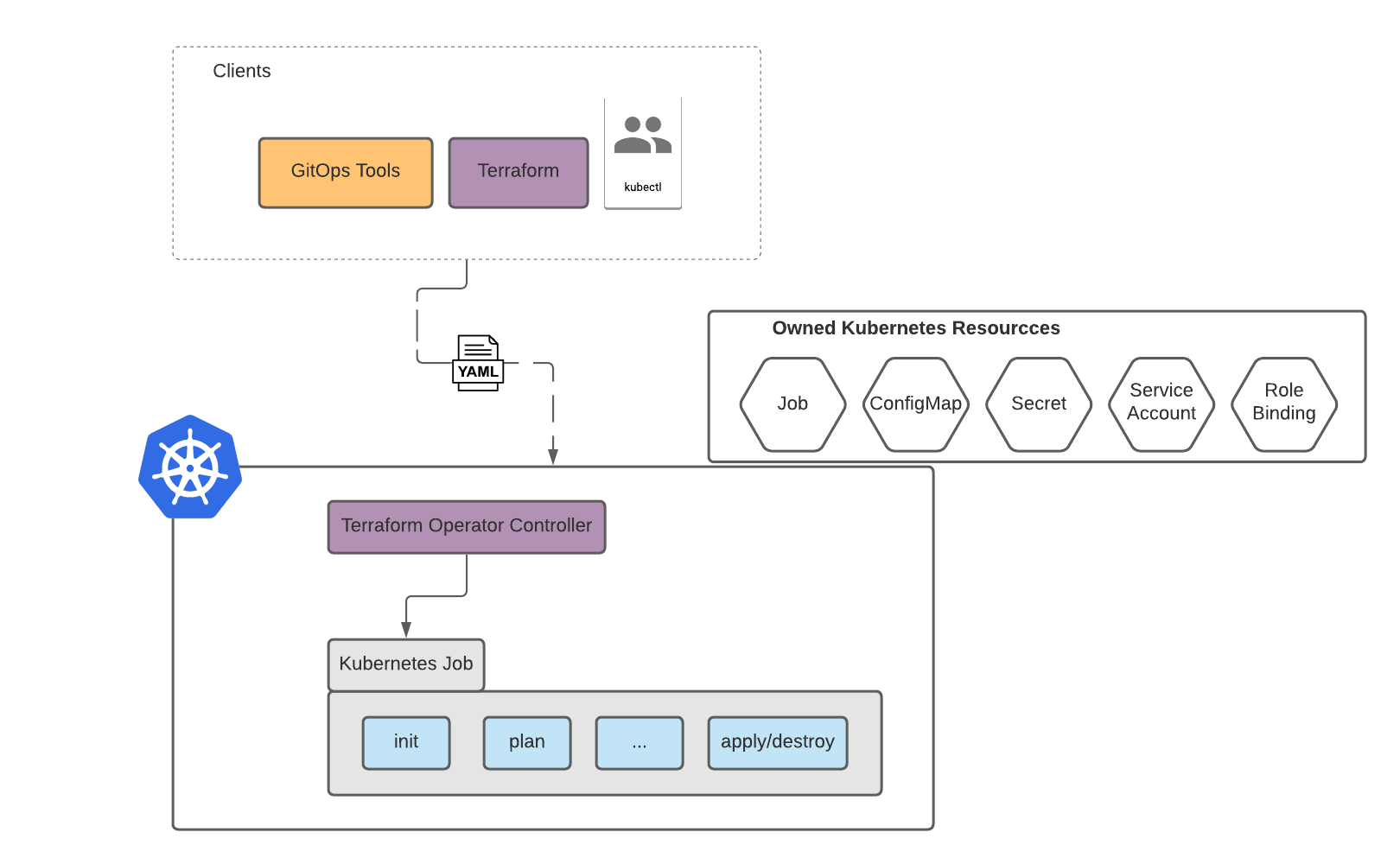Terraform Operator Design
Here is how the terraform operator works

Let’s say you created and applied the following manifest to Kubernetes:
apiVersion: run.terraform-operator.io/v1alpha1
kind: Terraform
...
spec:
terraformVersion: 1.0.2
module:
source: "IbraheemAlSaady/test/module"
version: "0.0.1"
variables:
- key: length
value: "16"
environmentVariable: false
outputs:
- key: result
moduleOutputName: result ## <-- the module has an output called result
Once the Terraform object was created, the controller will pick up the object and create a Kubernetes job. That Kubernetes job runs the Terraform Runner which will run the Terraform flow and install the required terraform version
Based on our template, the controller will create a main.tf file with the following content and mounts it into the terraform runner job
variable "length" {}
module "operator" {
source = "IbraheemAlSaady/test/module"
version = "0.0.1"
length = var.length
}
output "result" {
value = module.operator.result
}
The controller then will start monitoring the Job status and once completed/failed, the controller will update the Status of the Terraform object.
You may be wondering, but where did the length variable value is coming from? The controller will append the TF_VAR_ to any varialbe that has environmentVariable set to false, then later will inject it to the Kubernetes Job as an environment variable.
Aside from the Job, with each Terraform run, the controller will create the following resources:
- ConfigMap: this will contain the module rendered as shown above and will be mounted into the terraform runner job
- Secret: for outputs to be stored
- service account & role binding the terraform runner require access to the secret to write outputs. If the service account and role binding were not found in the namespace where the Terraform object was created, it will create them
If spec.outputs were defined in the manifest, the outputs will be added to the secret created by the controller